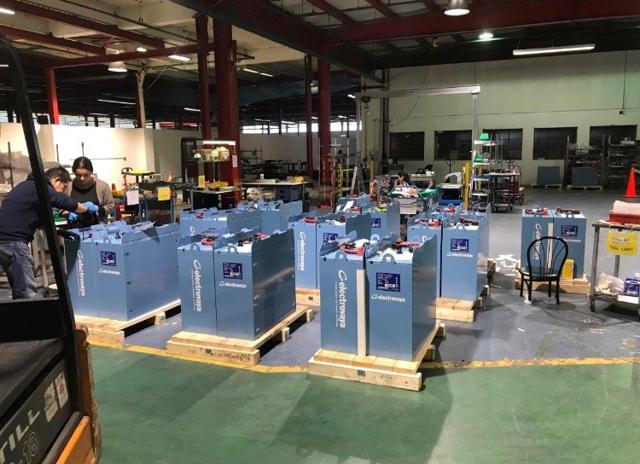Categories:
Energy
/
General Market Commentary
Topics:
General Energy
/
General Market Commentary
2018 Year In Review And 2019 Outlook: E-Mobility, Clean Energy Technologies And Lithium Batteries
Summary
- Tier 1 battery manufacturers move to rapidly expand global production capacity.
- Global movement to electric drive platforms in non-passenger vehicle markets including: buses, material handling, refuse trucks.
- Fear of oversupply rattles the lithium equity markets.
- Rapid growth in the global stationary energy storage and electric charging infrastructure markets.
2018 was another defining year for the lithium chain supply as the global population continued to make remarkable strides towards the implementation of clean energy and t ransportation. Although the clean energy and transportation industries are only in their early days, it has become apparent that the shift that has started is an irreversible trend, one that has begun to disrupt many established industries.
Many of the headlines in the clean technology space have evolved around the electrification of the passenger vehicle market. This is a very significant and immediate opportunity for the lithium supply chain. However, it is in my opinion that there are a large number of applications, both mobile and stationary, which are going to benefit from decreasing hardware costs coupled with new software platforms. Governments around the world have also taken firm action to expedite the implementation of these new technologies.
As a result of decreasing hardware costs, the emergence of innovative software platforms and the need to increase renewable energy generation, growth in lithium battery use will not be limited to e-mobility. The need to bring clean energy technologies to urban environments has also spurred the demand for lithium batteries and associated technologies. High-density urban and commercial environments most urgently require clean energy and transportation solutions, but are generally the most difficult environments into which to deploy such technologies.
A long list of headlines in 2018 proved out that lithium battery -based products are positioned to replace traditional technologies, such as lead-acid, and to open entirely new markets in the energy industry, such as Virtual Power Plants (VPP). Other breakthrough lithium battery -based technologies that have benefited from decreasing battery cost include: solar powered standalone (off-grid) electric vehicle charging stations, residential- and utility-scale stationary energy storage systems, microgrids for remote and underdeveloped regions of the world and commercial energy systems to support the integration of electric vehicle truck and bus fleets.
Electrovaya (OTC:OTCQX:EFLVF) lithium battery packs for material handling vehicles - Photo credit Electrovaya
Of course, this is only a sample of projects or products related to the transition to e-mobility and clean technologies. For example, the material-handling vehicle market, which sold 1.1 million vehicles (20-40KWh/unit) in 2017, had nearly zero percent lithium battery penetration rate.
It is the same story for the 180,000 refuse trucks that are in operation today in North America; likewise for the global ferry fleet. Although these appear to be less commonly referenced applications, they collectively amount to a massive opportunity for the lithium supply chain. Consider that various boat-building companies have announced new electric options that are equipped with between 500KWh to 5MWh per unit – an incredible amount of battery power per unit!
Vanadium battery hype in 2018
Despite significant promotional activity issued around vanadium-based flow battery technologies in 2018, the industry has seen very little investment in the technology with nearly no quality or bankable companies working on developing products. It is clear that lithium-based batteries have won the race to commercialization and will remain at the forefront for at least the next decade. A flood of second-life batteries will begin to emerge into the open market over the next 5 years, which suggests that alternative battery technologies may remain no more than development projects.
Lithium equities market readjust
Investors in the lithium exploration and production segment of the industry were rattled by fears of an oversupply that did not materialize. In fact, the fear of oversupply drove share prices to points low enough that they are actually discouraging new production. Junior exploration companies require strong prices and investment interest in order to attract new capital to complete work programs and to move their projects closer to production. Many lithium junior exploration companies were able to hit market capitalizations of nearly $100 million without ever completing any materially significant work on their projects. Retail investors were quick to buy into the concept that they had successfully identified the next SQM, leading to related projects popping up on all continents. To some extent, the bursting of the lithium bubble (what I call the lithium bubble 2.0) was very much required. Good quality projects and companies, such as Nemaska (OTC:OTCQX:NMKEF), have successfully attracted capital and continue to move forward.
Despite all of the news around growing demand for electric vehicles and various other lithium-based products, along with the announcements of battery manufacturing expansion plants from Tier 1 cell and battery manufacturers, the value of high-quality lithium exploration and production companies continues to decline. Although I do expect the news flow around new battery plant construction activity to escalate in 2019, it is not clear that investor interest will reemerge into lithium exploration and chemical producers. If interest does not reemerge, it may become difficult for juniors to attract the necessary capital creating a path to consolidation or acquisition.
